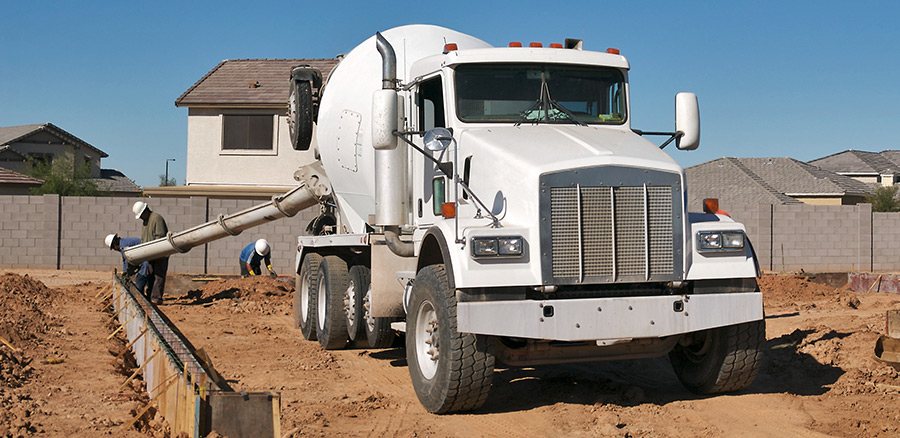Problem
- Difficulty staying current with new safety and technology developments
- Complex challenges and constraints associated with operating TXI's specialized vehicles
- Tried different behavior-based solutions, but needed technology that could significantly improve safety
Solution
- Implemented the Lytx DriveCam® safety program; used Lytx® onboarding resources and recommendations to address and reduce driver resistance
- Launched an extensive rollout using multiple communication channels: safety meetings, plant-specific meetings and newsletters
- Focused on the elevated security and driver protection aspect of the DriveCam® safety program to alleviate concerns
- Used the DriveCam program as a coaching and safety tool for every driver in its fleet
Results
- Reduced vehicle incidents by more than 90% in two years
- Continued to reduce vehicle incidents year after year
- Used video to exonerate multiple drivers and protect the company from false claims
The DriveCam difference
Founded in 1951 as Texas Industries Inc., Dallas-based TXI has grown to become a leading supplier of building materials, including cement, aggregate, and concrete.
With 2,100 employees and more than 100 facilities throughout Texas, Louisiana, Arkansas, Oklahoma, and California, TXI was challenged to stay current with safety and technology developments, while also ensuring that chosen programs and solutions were best suited for staff, management, and customers.
In the more than sixty years since its founding, TXI has maintained an unwavering commitment to employee and driver safety, launching its first company-wide safety program in 1954.
“We had embarked on a lot of behavior-based training programs,” said TXI Chief Operating Officer Jamie Rogers of the company’s efforts in recent years. “We were really looking for technology that could help us improve our safety program significantly, and the DriveCam safety program fit that bill.”
A successful implementation
According to Tom Zais, vice president of TXI’s Concrete Division, “The obstacles, challenges, and constraints associated with operating this incredibly complex equipment are plentiful. Add to this the risks TXI operators face on the roadways every day, and it’s clear that drivers and supervisors are under enormous pressure to keep their fleet safe.”
When TXI discovered the DriveCam safety program, they knew they had found the right solution. However, not everyone was happy. “When we first introduced the program at TXI, we did experience some resistance from the drivers,” said TXI Senior Plant Manager Federico Cosseo.
After consulting with Lytx experts, reviewing Lytx’s onboarding recommendations and driver communications resources, TXI management recognized the importance of educating drivers about the benefits of the program. They knew focusing on the elevated protection and security it offers would help ease concerns of supervisors and drivers.
“We worked pretty extensively to plan our rollout of the program,” Zais said. “We had a number of Town Hall sessions, and we used every communications medium we had available to us at the time, including safety meetings, plant-specific meetings, and newsletters. And we gave repeated demos of how the device and program work.”
Once the DriveCam safety program results became evident, the program was quickly embraced. In fact, Rogers said, “TXI has been very pleased with the results of the DriveCam safety program, almost from day one. Our drivers have accepted it, our supervisors have accepted it, and we’ve had exceptional results.”
The power of video, coaching, and making a difference
TXI's results include helping to protect its drivers from false claims. “There have been many incidents and accidents where we’ve used video to help exonerate the driver,” said Cosseo.
TXI Ready Mix Driver Cedric Williams is among those drivers. “As I was leaving one of our plants, I approached a red light that then changed to green,” Williams recalled. “As I started to proceed through the intersection, a vehicle on the right turned in front of me.” The DriveCam event recorder caught everything, including the fact that Williams was not at fault.
Thanks to the DriveCam safety program, Williams and his fellow drivers no longer have to worry about proving their innocence, because they have video on their side.
“After drivers realized how good this tool was and how much it was going to help them, they became advocates,” Cosseo reports. Zais also noted how using the DriveCam safety program as a coaching and improvement tool has helped drivers view supervisors as mentors rather than disciplinarians.
Using the DriveCam safety program has also allowed drivers to see how critical it is to perform at their best. “The program has given our mixer operators a little more validation that the things they’re doing—and not doing—can make a difference. It’s an incredibly sustainable system when coupled with the coaching environment that we’ve established.”
“It’s a good tool,” agrees Williams. “It helps you be safe by making you more aware and conscious of the decisions you make while driving.”
Cosseo concurs, adding, “It makes me feel very good knowing that we’re doing everything we can to make sure that our people are safe out there.”
The bottom line
According to Zais, “The results coming out of the gate were pretty extraordinary. We saw a significant reduction in vehicular incidents, on the order of 90%+ over the first twenty-four months. We continue to see a downward trend in year-over-year incidents.”
“Historically we’ve had little visibility into how this group of employees is driving and behaving,” added Rogers. “The DriveCam safety program really helps close that gap.”
Williams concluded, “When new drivers come to TXI, I tell them, don’t be afraid of [the DriveCam safety program], use it—embrace it. It’s a tool for you.”
